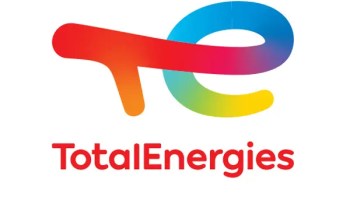The reports submitted to OPEC+ based on the assessment made b by IHS, Wood Mackenzie and Rystad Energy sealed the fate of Nigeria, Angola and Congo at the just concluded OPEC meeting on crude oil production quota downgrade held online.
This led to the eventual downgrade of the production quota of Nigeria to 1.5 million barrels per day production from 1.7 million barrels per day. This will however start from the first quarter of 2024.
These companies were commissioned to assess the level of production these African countries can achieve by 2024, and their reports indicated the various levels they think each country would attain by next year.
Going through the communiqué issued after the meeting, it was clear that by the assessment of these companies Nigeria would only be able to achieve 1.5 million barrels per day production.
The companies turned in their reports as follows: Angola at 1,110 t/bd, Congo at 277 t/bd and Nigeria at 1,500 t/bd.
Full text of the communiqué below
The communiqué stated that the OPEC+
- Noted that, in accordance with the decision of the 35th OPEC and non-OPEC Ministerial Meeting, the completion of the assessment by the three independent sources (IHS, Wood Mackenzie and Rystad Energy) for production level that can be achieved in 2024 by Angola, Congo and Nigeria as follows: Angola at 1,110 t/bd, Congo at 277 t/bd and Nigeria at 1,500 t/bd.
- The 37th OPEC and non-OPEC Ministerial Meeting will be held on 1 June 2024 in Vienna.
An initial leak from OPEC+ meeting suggested that the voluntary nature of additional output cuts is likely contributing to the negative market sentiment.
“Drowning in detail” is how another trader MSG’d as producers are going to have to come up with some hard numbers to convince the market that the cuts are real, and not just a repackaging of previously agreed measures.
But as the communique below shows, there appears to be none.
The 36th OPEC and non-OPEC Ministerial Meeting (ONOMM), was held via videoconference, on Thursday November 30, 2023.
The Meeting welcomed HE Alexandre Silveira de Oliveira, Minister of Mines and Energy of the Federative Republic of Brazil, which will join the OPEC+ Charter of Cooperation starting January 2024.
The meeting reaffirmed the continued commitment of the Participating Countries in the Declaration of Cooperation (DoC) to ensure a stable and balanced oil market.”
“In view of current oil market fundamentals, the Meeting:
- Reaffirmed the Framework of the Declaration of Cooperation, signed on 10 December 2016 and further endorsed in subsequent meetings including the 35th OPEC and Non-OPEC Ministerial Meeting on 4 June 2023; as well as the Charter of Cooperation, signed on 2 July 2019.
- Noted that, in accordance with the decision of the 35th OPEC and non-OPEC Ministerial Meeting, the completion of the assessment by the three independent sources (IHS, Wood Mackenzie and Rystad Energy) for production level that can be achieved in 2024 by Angola, Congo and Nigeria as follows: Angola at 1,110 t/bd, Congo at 277 t/bd and Nigeria at 1,500 t/bd.
- The 37th OPEC and non-OPEC Ministerial Meeting will be held on 1 June 2024 in Vienna.”
Reactions
The reaction is clear – oil prices are falling rapidly as the market had been led to expect 1 million barrels a day of extra cuts, but there’s no mention of them at all in the communique…
…as the various nations have begun to announce their voluntary cuts:
- Saudi Extends Voluntary Oil Cut of 1m B/D to End 1Q24: SPA
- Russia Oil-Export Cuts increased by 200k B/D in 1Q 2024 to Reach 500k B/D
- Kuwait Said to Make Additional 135k B/D OPEC+ Oil Output Cut
- Algeria to Make Additional 51k B/D OPEC+ Output Cut
- Oman to Make Additional 42k B/D Oil Output Cut in 1Q
- Kazakhstan to cut oil output by additional 82k B/D in 1Q
- UAE to Make Additional 160k B/D OPEC+ Output Cut
- Angola has rejected its quota
Here’s what Wall Street thinks about OPEC+’s actions (or lack of them)…
Alex Longley, Bloomberg
So why are we lower? Drowning in detail is how one trader put it to me. The additional cuts will be announced by OPEC+ members themselves. Others argue this is a repackaging of previously agreed measures, with some uncertain extras. Throw in a decent rally over the last few days (and not to mention month end and expiry day for Brent contracts!), and that’s why we are where we are. Our latest oil futures take is here:
Julian Lee, Bloomberg:
What appears to be the voluntary nature of additional output cuts is likely contributing to the negative market sentiment. There’s a real worry that this might be little more than the repackaging of cuts that were already extended to the end of 2024 back in June. The producers are going to have to come up with some hard numbers to convince the market that the cuts are real. I agree with Arne Lohmann, the communication has been poor. Perhaps that’s a reflection of the difficulty of getting everyone to agree, but that in itself raises concerns about how much of any extra cut will be real.
It’s looking increasingly like the additional 1 million barrels a day of cuts won’t be formalized in new official output targets. Instead members will individually announce their contributions, just as they did in April for the voluntary reductions that came into effect in May. Those also amounted to a shade over 1 million barrels a day.
Giovanni Staunovo, UBS
“It seems the OPEC+ production cuts are “voluntary” cuts, not part of an OPEC+ agreement. Hence the concern is that a large fraction of it could be a pledge on paper and effectively less barrels being removed from the market.”
Arne Lohmann Rasmussen, A/S Global Risk Management
“They did the right thing and reacted to the looming 2024 surplus. But the performance/execution has been really poor. Quotas being announced individually was not good communication. However, the risk probability of oil going significantly lower should now be small.”
Dominic Ellis, UBS
Source: S&P with additional reports





